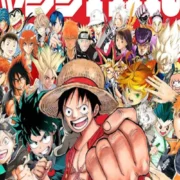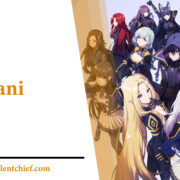Manga, a term that refers to Japanese comics, has captured the hearts and imaginations of readers around the globe. Renowned for its distinct visual style and diverse storytelling, manga has become a cultural phenomenon, reaching far beyond its borders in Japan. In this article, we will take a comprehensive look at manga, exploring its history, characteristics, genres, and its significant impact on global pop culture.
Table of Contents
History:
Originating in Japan, manga has a long and fascinating history that can be traced back to the 12th century. The earliest forms of the manga were scrolls and picture books known as “emaki,” which depicted historical narratives and folk tales through sequential art. Over the centuries, manga continued to evolve, incorporating humor, social commentary, and fantasy elements.
One of the defining features of manga is its distinctive visual style. Manga artists employ a range of techniques, including exaggerated facial expressions, dynamic action sequences, and intricate panel layouts. The use of speed lines, known as “swoosh lines,” to depict movement and emotion is also a characteristic trait of manga. These visual elements contribute to the unique storytelling experience that sets manga apart from other comic traditions.
Different Genres:
Manga encompasses a vast array of genres, appealing to readers of all ages and interests. Shonen manga targets young boys and often revolves around action, adventure, and heroic journeys. Popular series like “Dragon Ball” and “One Piece” fall into this category, captivating readers with their epic battles and fantastical worlds. On the other hand, shojo manga caters to young girls, emphasizing romance, friendship, and self-discovery. Beloved titles such as “Sailor Moon” and “Cardcaptor Sakura” have left a lasting impact on readers with their engaging narratives and relatable characters.
Seinen manga caters to an older male audience, often delving into more mature themes such as politics, psychological exploration, and social commentary. Works like “Berserk” and “Death Note” are renowned for their complex characters and thought-provoking storytelling. Josei manga, targeting older female readers, explores lovd personal growth themes. Series like “Nana” and “Honey and Clover” delves into the complexities of adult life, resonating with readers through their realistic and nuanced portrayals.
Influence of Manga:
Manga’s influence extends beyond the pages of its comic panels. Many manga series have been adapted into successful anime (animated) series, reaching an even broader audience worldwide. The combination of visually striking art and compelling narratives has made manga a rich source of inspiration for filmmakers and creators in other mediums. Live-action adaptations, movies, TV dramas, and even stage plays have brought beloved manga stories to life, capturing the essence of the original works while introducing them to new audiences.
The global popularity of manga can be attributed to its ability to address universal themes and emotions. Manga explores a wide range of topics, including friendship, love, self-identity, social issues, and personal growth. The relatable characters and immersive storytelling draw readers into captivating worlds that resonate with their own experiences, fostering a sense of connection and empathy.
Manga has also played a significant role in shaping global pop culture. It has inspired countless artists and writers worldwide, influencing the visual styles and storytelling techniques of comics from various countries. The impact of manga can be seen in the rise of “manga-influenced” or “manga-inspired” comics in Western countries, as well as the popularity of conventions and cosplay events dedicated to manga and anime.
Conclusion:
In Japan, manga holds a prominent position in society. It is widely read by people of all ages and is not limited to a specific demographic. Manga has also been used as an educational tool, with certain series being adapted for educational purposes, teaching subjects like history, science, literature, and even language learning. The engaging visuals and storytelling techniques found in manga make it an effective medium for conveying information in an accessible and entertaining way.
FAQs
1. What is the history of manga?
Originating in Japan, manga has a long and fascinating history that can be traced back to the 12th century. The earliest forms of the manga were scrolls and picture books known as “emaki,” which depicted historical narratives and folk tales through sequential art. Over the centuries, manga continued to evolve, incorporating humor, social commentary, and fantasy elements.
2. What makes manga visually unique?
One of the defining features of manga is its distinctive visual style. Manga artists employ a range of techniques, including exaggerated facial expressions, dynamic action sequences, and intricate panel layouts. The use of speed lines, known as “swoosh lines,” to depict movement and emotion is also a characteristic trait of manga. These visual elements contribute to the unique storytelling experience that sets manga apart from other comic traditions.
3. What are the different genres in manga?
Manga encompasses a vast array of genres, appealing to readers of all ages and interests. Shonen manga targets young boys and often revolves around action, adventure, and heroic journeys. Shojo manga caters to young girls, emphasizing romance, friendship, and self-discovery. Seinen manga caters to an older male audience, often delving into more mature themes, while Josei manga targets older female readers and explores themes of love, career, and personal growth.













Comments